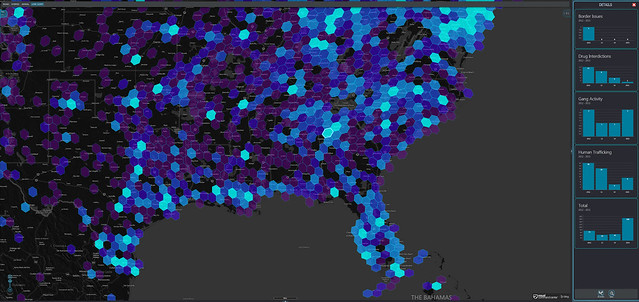We recently added for customers of VCC the ability to archive,search, and display, all of their incoming threat elements in order to build up a custom terrain of risk. Organizations aren't all threatened by the same sorts of things (Pennywise, for example, may have cast a long dark shadow over your childhood, or he was just Tim Curry dancing around in makeup), so letting customers define what determines a risk, then letting them add or remove those types of threats to build up a living mesh of relative danger, is a flexible way of conjuring the relative hot spots which may represent areas to avoid, reinforce, or they may be opportunities for improvement.
Historical incidents of a customer's feeds of terrorism, human trafficking, and gang activity.
Choosing a specific cell shows local trending along the sources of risk included in the terrain mapping.
A look at the local breakouts for extreme weather and natural disasters in the American Midwest.
A custom risk profile.
Risk trending within a selected cell.
Why all the risk, threat, danger? Because being aware of existential threats informs safe decisions, specifically for organizations that are responsible for the safety of their employees. Anyways, you know what they say about knowing.
Then what's up with all the hexagons?
First off, hexagons are awesome. Second off, they are nature's most efficient tessellation framework for maximum spatial variability within a tiled pattern on a Euclidean plane. But the Earth is not a Euclidean plane! So... Last off, teams of scientists have delivered on a multi-scale segmentation scheme for dividing the surface of the earth into roughly equal area cells (big thanks to Kevin M. Sahr of Southern Oregon University).
Cells?
Yes, cells! Because these hexagons (mostly hexagons) are vector cells, they are interactive to the user. So you can grab one and pull down all specific assets currently in that area or travelers destined to pass through that area, or export underlying data to Excel, or whatever. In any case, to an organization charged with protecting people and assets, the context of history is a welcome help.
Tweet
Follow @JohnNelsonIDV






No comments:
Post a Comment